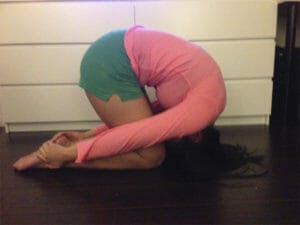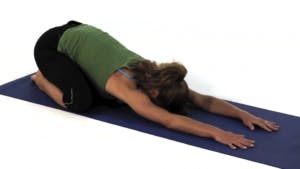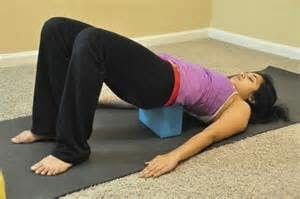Should Kids Play Multiple Sports or Not?
One of subjects that is getting to be a hot topic is looking at our kids in playing sports. The debate is whether or not they should just play one or play multiple sports. TOPS opinion would be to play multiple sports and here is why:
- Potentially reduce the risk of overuse injuries.
Playing the same sport year-round trains the same movement patterns which leads to muscular imbalances and asymmetries. Take a pitcher or a thrower for example and have them throw year-round at high level. Their shoulder or elbow takes on maximal torque and then eventually the soft tissue and/or ligaments wear down and become injured. - Playing multiple sports keeps kids drive and passion up longer.
Kids lose their drive they grow tired of things quickly (because they are kids) when they play only one sport. Playing multiple sports allows them to play a sport for a period time and then get an opportunity to hit the reset button and begin something else. Not only does it shift gears completely it allows them to get hungry again for the sport they just finished because they will probably get tired of their next sport. - Can actually become an “Athlete.”
You can make an argument for a person who plays one specific position year-round that they are not really athletes. They are only good at their one specific sport and even further, one specific position. Playing multiple sports allows you to train different movement patterns, which will constantly challenge your body. This will allow your body to become stronger and more athletic.
These are just a few reasons as to why we strongly believe kids should play multiple sports as long as they can.
Benefits of Yoga
Many of you are probably familiar with yoga or have seen it available at different gyms and studios. This blog will explain a little about the history, types and benefits of yoga. We will also introduce a few of our favorite stretching poses for the back. Stay tuned for additional blogs addressing poses for strength and balance.
First, a little history. Yoga is a 4,000 year old practice developed to enhance physical and emotional balance by tying breath with movement. The breathing techniques are called pranayamas and the movements or poses are called asanas. Typical types of yoga you might see around town are Vinyasa yoga, Power yoga, Hot yoga and Iyengar yoga. The fundamentals of these different types are developed from Hatha yoga. The core components of Hatha yoga include postures, breathing and meditation. The subtypes mentioned above, typically have specific focuses. For instance, Vinyasa follows a particular sequence of poses coordinated with an inhalation and exhalation. Iyengar yoga is a practice of precision where proper alignment is the main focus. Hot yoga is practiced in a heated and humidified environment usually involving a specific sequence of poses. These are only a few of the numerous subtypes, but you can be certain no matter the type, you will reap the benefits.
What are the benefits of yoga? Yoga improves postural control and balance. Yoga has also been shown to increase strength and endurance. Let’s not forget those psychological benefits like decreasing pain and depression. With all these benefits, let’s try some yoga!
Rabbit Pose

- Begin sitting on heels with thumbs on outside of feet. Feet can be extended or flexed.
- Roll the spine forward bringing the crown of the head as close as possible to the knees. If you are unable to hold the heels you can utilize a strap.
- Pull on the heels to lift the hips, rounding into the spine, gently pressing into the crown of the head.
- Hold for 5 slow inhalations and exhalations. With each inhalation lift the hips. With each exhalation pull on the heels to round the spine even more.
Benefits: Improves mobility of spine and back, decreases pressure of the neck and back, decreases depression and insomnia
Child’s Pose

- Kneel on the floor, big toes together
- Sit back on your heels and separate knees to hip-width apart
- Exhale bringing your forehead to the floor in front of you.
- Place the hands outstretched in front of you or down by your sides.
- Hold for 5 slow inhalations and exhalations. With each inhalation reach forward with your fingertips. With each exhalation push back with your hips, bringing your seat closer to your heels.
Benefits: stretches low back, hips and thighs, increased blood circulation to head, calms mind and body, helps reduce fatigue
Supported Bridge Pose

- Lie on your back, feet flat with a yoga block nearby.
- Extend your arms down to your sides.
- With feet parallel, press down into the soles of the feet and lift the hips off the floor.
- Place the block underneath the sacrum in a comfortable position.
- Stay in this position for several minutes. Come out of the pose if you experience any discomfort.
- When finished, press into the feet and lift the hips to remove the block and slowly lower to the floor.
Benefits: Reduces anxiety, fatigue, low back pain, headache, insomnia, decreases menstrual discomfort
Astym® Therapy Shown Effective in the Treatment of Tennis Elbow
OFFICIALLY SAY GOOD-BYE TO YOUR TENNIS ELBOW!
“A controlled clinical trial showing the effectiveness of Astym (R) treatment for tennis elbow was presented at the American Society for Surgery of the Hand’s annual meeting. The study showed that Astym treatment was an effective tennis elbow therapy by resolving 78.3% of chronic lateral epicondylitis (tennis elbow) cases. This figure is consistent with the 80.9% resolution rate for chronic lateral epicondylitis (tennis elbow) that was contemporaneously reported in the national outcomes database for Astym treatment. This correlation demonstrates the reliability of the Astym outcomes database.”
More support for Astym therapy has just been published. A large, randomized clinical trial showing Astym therapy to be highly effective for tennis elbow, and also demonstrating Astym therapy’s impressive efficacy on recalcitrant tennis elbow, has just been published in a peer-reviewed journal.
This large scale clinical trial demonstrating the effectiveness and safety of Astym therapy gives even more reason for referral sources and patients to seek out certified Astym providers. Large controlled clinical trials are very important contributions to the literature, and we are pleased that Astym therapy has joined the rare, elite rank of treatments that have quality clinical trials supporting effectiveness and safety.
Please feel free to download and share this clinical trial: https://peerj.com/articles/967.pdf
You don’t have to live with chronic pain! WE CAN HELP!
ASK US ABOUT OUR ASTYM THERAPY AND GET SET UP WITH AN
ASSESSMENT AT: www.TOPSPhysicalTherapy.com OR Call: 602-826-0037
Tricks and Tips to be in Tip TOPS Shape
With the fabulous weather we have in Arizona, everyone is in search year round of a quick fix to become bikini ready/shorts ready/fit. Since consistency is key to creating the body we all desire, we have created a workout schedule for you to follow throughout the week to keep your exercise sessions exciting and to keep your body guessing. By sticking to our plan, you will not have to worry about being “TOPSless” at the beach and pool this summer!
Although everyone is excited for the weekend, do not forget to squeeze in a short 25-45 minutes of cardio or HIIT and at least 5 total body exercises. We know you are all busy and you are tired from the long week, but fitting in a short workout is always better than skipping it. You can do this!
- 1 minute of squats
- 1 minute of push-ups
- 1 minute of mountain climbers
- 1 minute of bench dips
- 1 minute of burpees
- 1 minute of crunches
- 1 minute of jumping lunges
- 1 minute of planks
Total Body Exercises – choose from any of the following, and complete at least 3 sets of 12-15 reps. Feel free to use your imagination and combine any exercises to challenge the body and increase the complexity of the exercise.
- Squats
- Walking Lunges
- Push-ups
- RDLs
- Kettlebell or Dumbbell Swings
- Step-ups
- Bicep Curls
- Sit-ups
- Lateral Lunges
- Thrusters (Squat + OH press)
- Lateral Dumbbell Raises
- Dumbbell Rows
- Single leg sit to stand
- Lat pull downs
- Bench press
- Box Jumps
Do you feel like hitting snooze and skipping your workout?!? Make sure to follow this readiness assessment every morning and ask yourself the following 3 questions:
- Did I sleep for 7 hours?
- Do I desire to train?
- Am I in a good mood?
If you answered “No” to 2 out of the 3 questions, you should probably consider skipping your training session for the day in favor of 30-60 minutes of walking. Take the time to listen to your body – it is usually trying to tell you something!
For more information about workouts, rehabilitation, wellness, and health, visit www.topsphysicaltherapy.com and check us out on Facebook, Instagram, and Twitter. Or if you have a specific question comment on Facebook!
